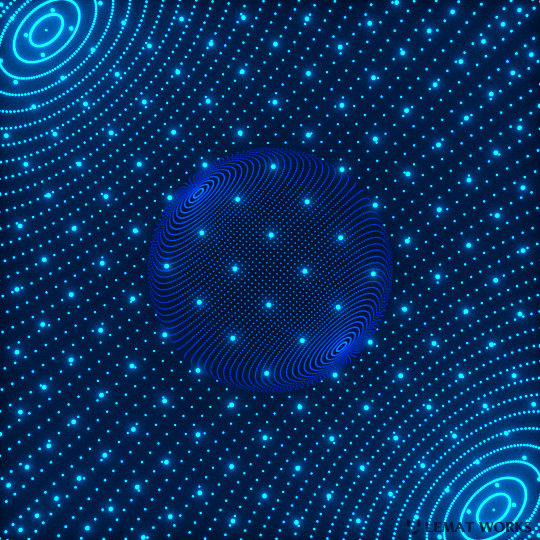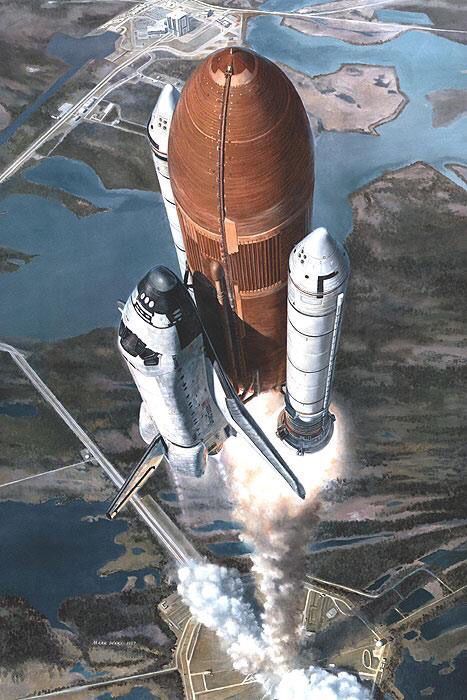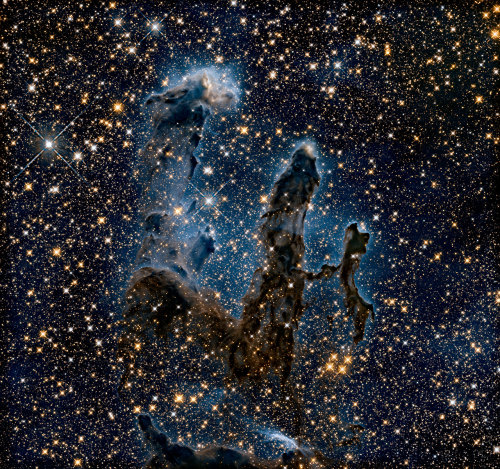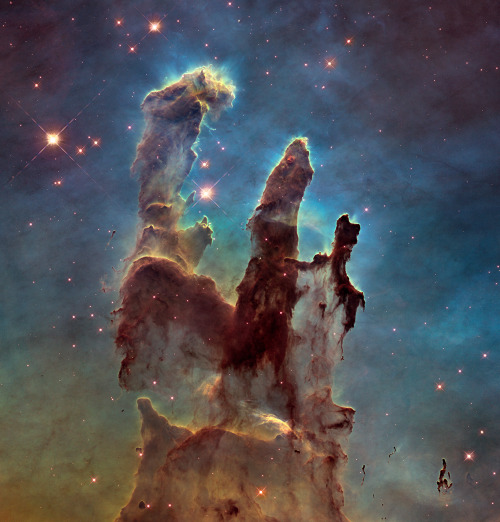What We Are Doing While You Sleep

What we are doing while you sleep
More Posts from Epic-flight and Others

Produced by LEMAT WORKS
Dot Planet1 2 3 4 5 6 7 8 9 10 11 12 13 14 15 16 17 18 19 20 21 / Twinkle Night3 15 17 22 27 29 / LEMAT LINK / Behance(High Resolution)✨

The Avalon - Passengers

Comet NEAT revealed in close-up by the WIYN 0.9-meter telescope at Kitt Peak National Observatory near Tucson, Arizona on May 7, 2004.
(HubbleSite)


”I didn’t feel like a giant. I felt very, very small.”
–Neil Armstrong on looking back at the Earth from the Moon in July 1969.
(Sources: 1, 2)

The first step on the Moon, illustrated by Norman Rockwell for Look, 1967.

meirl

N1 Rocket - Mac Rebisz
Black Holes: Seeing the Invisible!
Black holes are some of the most bizarre and fascinating objects in the cosmos. Astronomers want to study lots of them, but there’s one big problem – black holes are invisible! Since they don’t emit any light, it’s pretty tough to find them lurking in the inky void of space. Fortunately there are a few different ways we can “see” black holes indirectly by watching how they affect their surroundings.

Speedy stars
If you’ve spent some time stargazing, you know what a calm, peaceful place our universe can be. But did you know that a monster is hiding right in the heart of our Milky Way galaxy? Astronomers noticed stars zipping superfast around something we can’t see at the center of the galaxy, about 10 million miles per hour! The stars must be circling a supermassive black hole. No other object would have strong enough gravity to keep them from flying off into space.

Two astrophysicists won half of the Nobel Prize in Physics last year for revealing this dark secret. The black hole is truly monstrous, weighing about four million times as much as our Sun! And it seems our home galaxy is no exception – our Hubble Space Telescope has revealed that the hubs of most galaxies contain supermassive black holes.
Shadowy silhouettes
Technology has advanced enough that we’ve been able to spot one of these supermassive black holes in a nearby galaxy. In 2019, astronomers took the first-ever picture of a black hole in a galaxy called M87, which is about 55 million light-years away. They used an international network of radio telescopes called the Event Horizon Telescope.

In the image, we can see some light from hot gas surrounding a dark shape. While we still can’t see the black hole itself, we can see the “shadow” it casts on the bright backdrop.
Shattered stars
Black holes can come in a smaller variety, too. When a massive star runs out of the fuel it uses to shine, it collapses in on itself. These lightweight or “stellar-mass” black holes are only about 5-20 times as massive as the Sun. They’re scattered throughout the galaxy in the same places where we find stars, since that’s how they began their lives. Some of them started out with a companion star, and so far that’s been our best clue to find them.

Some black holes steal material from their companion star. As the material falls onto the black hole, it gets superhot and lights up in X-rays. The first confirmed black hole astronomers discovered, called Cygnus X-1, was found this way.
If a star comes too close to a supermassive black hole, the effect is even more dramatic! Instead of just siphoning material from the star like a smaller black hole would do, a supermassive black hole will completely tear the star apart into a stream of gas. This is called a tidal disruption event.
Making waves
But what if two companion stars both turn into black holes? They may eventually collide with each other to form a larger black hole, sending ripples through space-time – the fabric of the cosmos!

These ripples, called gravitational waves, travel across space at the speed of light. The waves that reach us are extremely weak because space-time is really stiff.
Three scientists received the 2017 Nobel Prize in Physics for using LIGO to observe gravitational waves that were sent out from colliding stellar-mass black holes. Though gravitational waves are hard to detect, they offer a way to find black holes without having to see any light.
We’re teaming up with the European Space Agency for a mission called LISA, which stands for Laser Interferometer Space Antenna. When it launches in the 2030s, it will detect gravitational waves from merging supermassive black holes – a likely sign of colliding galaxies!

Rogue black holes
So we have a few ways to find black holes by seeing stuff that’s close to them. But astronomers think there could be 100 million black holes roaming the galaxy solo. Fortunately, our Nancy Grace Roman Space Telescope will provide a way to “see” these isolated black holes, too.

Roman will find solitary black holes when they pass in front of more distant stars from our vantage point. The black hole’s gravity will warp the starlight in ways that reveal its presence. In some cases we can figure out a black hole’s mass and distance this way, and even estimate how fast it’s moving through the galaxy.
For more about black holes, check out these Tumblr posts!
⚫ Gobble Up These Black (Hole) Friday Deals!
⚫ Hubble’s 5 Weirdest Black Hole Discoveries
Make sure to follow us on Tumblr for your regular dose of space: http://nasa.tumblr.com.

"T-Plus 30" by Aviation Artist Mark Waki
The Space Shuttle Discovery completes its roll to heading and begins its pitchover maneuver about 30 seconds after liftoff from Pad B of Kennedy Space Center's Launch Complex 39.
Artists Note: It's actually T-Plus 23, but T-Plus 30 was decided on for the painting's title. Discovery is about 5,000 feet AGL, has completed 179 degrees of roll to heading and is pitched over about 20 degrees. The vehicle is gaining altitude at 500 feet per second while accelerating at 1.8g


Sometimes… there’s more than meets the eye. 👀 You’re looking at two very different takes on an iconic image.
Human eyes can see only a small portion of the range of radiation given off by the objects around us. We call this wide array of radiation the electromagnetic spectrum, and the part we can see visible light.
In the first image, researchers revisited one of Hubble Space Telescope’s most popular sights: the Eagle Nebula’s Pillars of Creation. Here, the pillars are seen in infrared light, which pierces through obscuring dust and gas and unveil a more unfamiliar — but just as amazing — view of the pillars. The entire frame is peppered with bright stars and baby stars are revealed being formed within the pillars themselves. The image on the bottom is the pillars in visible light.
Image Credit: NASA, ESA/Hubble and the Hubble Heritage Team
Make sure to follow us on Tumblr for your regular dose of space: http://nasa.tumblr.com.
-
 scopophilic1997 liked this · 2 years ago
scopophilic1997 liked this · 2 years ago -
 natureandprose liked this · 2 years ago
natureandprose liked this · 2 years ago -
 mishazcorner liked this · 2 years ago
mishazcorner liked this · 2 years ago -
 keatsonthebeach liked this · 2 years ago
keatsonthebeach liked this · 2 years ago -
 brokenseaglass1 liked this · 2 years ago
brokenseaglass1 liked this · 2 years ago -
 goneahead reblogged this · 2 years ago
goneahead reblogged this · 2 years ago -
 goneahead liked this · 2 years ago
goneahead liked this · 2 years ago -
 thevonntrapp liked this · 2 years ago
thevonntrapp liked this · 2 years ago -
 baixotu liked this · 2 years ago
baixotu liked this · 2 years ago -
 visitinggrandma reblogged this · 2 years ago
visitinggrandma reblogged this · 2 years ago -
 visitinggrandma liked this · 2 years ago
visitinggrandma liked this · 2 years ago -
 bobv48-blog liked this · 2 years ago
bobv48-blog liked this · 2 years ago -
 silvertrees reblogged this · 2 years ago
silvertrees reblogged this · 2 years ago -
 silvertrees liked this · 2 years ago
silvertrees liked this · 2 years ago -
 my-infinite-enjoyment reblogged this · 3 years ago
my-infinite-enjoyment reblogged this · 3 years ago -
 my-infinite-enjoyment liked this · 3 years ago
my-infinite-enjoyment liked this · 3 years ago -
 pilothaneen reblogged this · 3 years ago
pilothaneen reblogged this · 3 years ago -
 myrasarah liked this · 3 years ago
myrasarah liked this · 3 years ago -
 anon-renaissance-man reblogged this · 3 years ago
anon-renaissance-man reblogged this · 3 years ago -
 anon-renaissance-man liked this · 3 years ago
anon-renaissance-man liked this · 3 years ago -
 epic-flight reblogged this · 4 years ago
epic-flight reblogged this · 4 years ago -
 devilzedge reblogged this · 4 years ago
devilzedge reblogged this · 4 years ago -
 devilzedge liked this · 4 years ago
devilzedge liked this · 4 years ago -
 lookalive-gravity liked this · 4 years ago
lookalive-gravity liked this · 4 years ago -
 stumblingman15 liked this · 4 years ago
stumblingman15 liked this · 4 years ago -
 therealcyberelf liked this · 4 years ago
therealcyberelf liked this · 4 years ago -
 elektrostantsiya reblogged this · 5 years ago
elektrostantsiya reblogged this · 5 years ago -
 wounded-ronin reblogged this · 5 years ago
wounded-ronin reblogged this · 5 years ago -
 marinah2oblue liked this · 5 years ago
marinah2oblue liked this · 5 years ago -
 yynadia-blog liked this · 5 years ago
yynadia-blog liked this · 5 years ago -
 practicallysatanic reblogged this · 5 years ago
practicallysatanic reblogged this · 5 years ago -
 probably-lucifer liked this · 5 years ago
probably-lucifer liked this · 5 years ago -
 handmetheshovel reblogged this · 5 years ago
handmetheshovel reblogged this · 5 years ago -
 handmetheshovel liked this · 5 years ago
handmetheshovel liked this · 5 years ago -
 deliligeovguu liked this · 5 years ago
deliligeovguu liked this · 5 years ago -
 azranmizan reblogged this · 6 years ago
azranmizan reblogged this · 6 years ago
